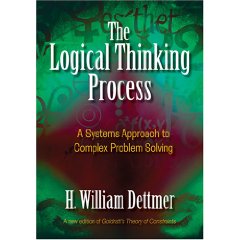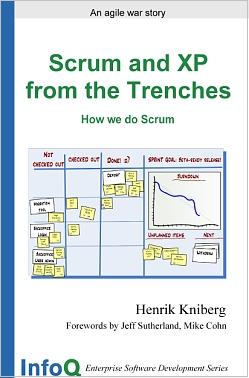Putting the team’s heart in the game
Jim McCarthy gives an overview of the commitments and protocols of “The Core“. The Core provides us with tools to enhance team communication and alignment. When we want to achieve collective greatness we need to aggregate the strengths of the team members. If we want to achieve mediocrity, we can just let each person’s weaknesses nullify another’s strengths. The same message is also at the core of the “Mirror Mirror” session Portia and I organized.
I’d give this presentation a 6/10
What I liked was:
- The personal anecdotes Jim told
- The relaxed presentation style
- Jokes
To make it perfect I would:
- Use less of a preaching tone, but talk about the simple, practical tools and their results in terms that engineers and managers understand
- Take the audience through the tools and gradually build up towards the synergistic effects of the tools
- Adopt a consistent stance and style during the presentation
- Always talk clearly, directly to the audience and avoid asides
- Show more, tell less
I’ve been to Bootcamp and have used The Core tools for years. They work.
I’m afraid that the material (the book, the bootcamp manual, this talk) does not do the tools justice.
I’m In.
Business Value Game
We organized a tryout of the new Business Value Game, the first public outing of the latest game Vera and I designed. A group of us grabbed two tables in the Open Space room and played the game with two teams. The game went quite smoothly and the participants gave me a lot of good feedback to improve and extend the game.
Vera and I will publish the game soon, after the next tryout. As usual, the game will have a Creative Commons license, so that you can remix and reuse the game. If you want a pre-release copy of the game, contact me.
Gino showed us some more of Toronto and offered us an impromptu but excellent lunch. We really wanted to go to the “Seeking to Perceive more than to be Perceive” by Emmanuel Gaillot and Bernard Notarianni, but we had to prepare for our session in the next slot.
Les Neuf Cases / The Nine Boxes
“Les Neuf Cases pour mieux comprendre son Client” presents the “9 boxes” interview technique from Solution Selling in the French language track. Because some English speaking participants expressed interest in the session, we decided to make this a bilingual session, “V.O. en français sous-titré en anglais”.
The session worked really well. The participants were really engrossed in interviewing each other and learned a useful technique. The discussion at the end was even more interesting, as we looked at the bigger picture:
- We have a systemic problem with sales compensation, if the bonus is only tied to selling the project and not to delivering the project. Selling fairytales is easy. Implementing them is hard. I’d rather see bonuses tied to succesful delivery. This gives us two bonus features: salespeople have an incentive to sell short projects that deliver quickly and company cash flow improves as the bonus is paid upon payment by the customer.
- The consulting model of Solution Selling is really useful in lots of situations. The 9 boxes are a technique to perceive more.
- A customer who knows what they want is extremely dangerous. If we don’t explore the problem, we will likely end up building a solution that does not solve a problem. Where’s the value in that? Solution Selling gives us the “Re-engineering the Vision” tool to bring our interviewee back from box 9 (“I know the solution”) to box 1 (“If that’s the solution, what is the problem?”).
- The Nine Boxes can be used by everyone who wants to know what we need to make, from the salesperson to the developer. The salesperson is our first analyst. The Nine Boxes provide most of the information you need to write epics and stories. Dave Nicolette explains how to write User Stories with the Nine Boxes.
We got a lot of good feedback from the participants. Doing a bilingual session was really fun.
I wonder about the “Chansons Françaises” stage for French-language sessions. Some of the sessions on this stage only had a low number of participants. This track seems a bit ‘ghetto’, apart from the rest of the conference. Bilingual sessions help to cross the language barrier. You do need bilingual session presenters, though. Portia and I are available 🙂
Buzz
There’s a bit of buzz about techniques like Kanban, Real Options, Lean and Theory of Constraints. People will exclaim things like “Oh, I see! That’s creating an option!” or talk about bottlenecks and flow. Chris Matts keeps popping up everywhere like a one-man marketing machine spreading the word. Portia and I have met many people who’ve heard about these concepts and want to know more. Watch out for more news about our “Real Options Space Game” to experience Real Options while playing an SF board game.
Reception and dinner
The evening ends with the traditional dinner, speeches and awards. One of the highlights was the “XP song” by the Japanese participants. After dinner, we have several more chats over drinks. I’m really happy that many people came up to us to talk about the XP game and the other games Vera, Portia and I designed.
I’m glad I’m at Agile 2008.
I’m sad it’s almost over
I’m In.




